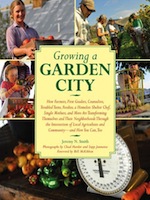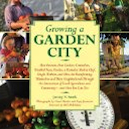Community Supported Agriculture (CSA) has become a popular way for consumers to buy local, seasonal food directly from a farmer. Generally a farmer offers a certain number of “shares” to the public. Typically the share consists of a box of vegetables, but other farm products may be included. Interested consumers purchase a share (also called a “membership” or a “subscription”) and in return receive a delivery of seasonal produce each week throughout the farming season.
CSA programs have skyrocketed in popularity, swelling from a handful 25 years ago to more than 12,500 across the country, according to the USDA.
 A special relationship forms the heart of the CSA where a farm is supported by a community of customers who become closely affiliated through weekly newsletters, farm visits, and annual harvest festivals.
A special relationship forms the heart of the CSA where a farm is supported by a community of customers who become closely affiliated through weekly newsletters, farm visits, and annual harvest festivals.
Jason Mark, writer for Change.org’s Sustainable Food, asks if there isn’t a way to harness that sense of community and personal connection in a “agriculture-supported community?” He holds up the University of Montana’s farm-to-college program where the campus spent half a million dollars buying from Montana farms and ranches in 2010.
Jeremy Smith, author of Growing a Garden City, describes agriculture-supported community as a collection of urban and suburban farms and gardens where local eaters keep local farmers in business.


Huzzah – this is the very theme that Trauger Groh and I emphasized 20 years ago back in 1990 when we wrote the first book on CSA
Farms of Tomorrow: Community Supported Farms – Farm Supported Communities
Glad to see that, amidst all the mercenary turns CSA has taken over the years, some astute participants are seeing the importance of this dimension…Onward…